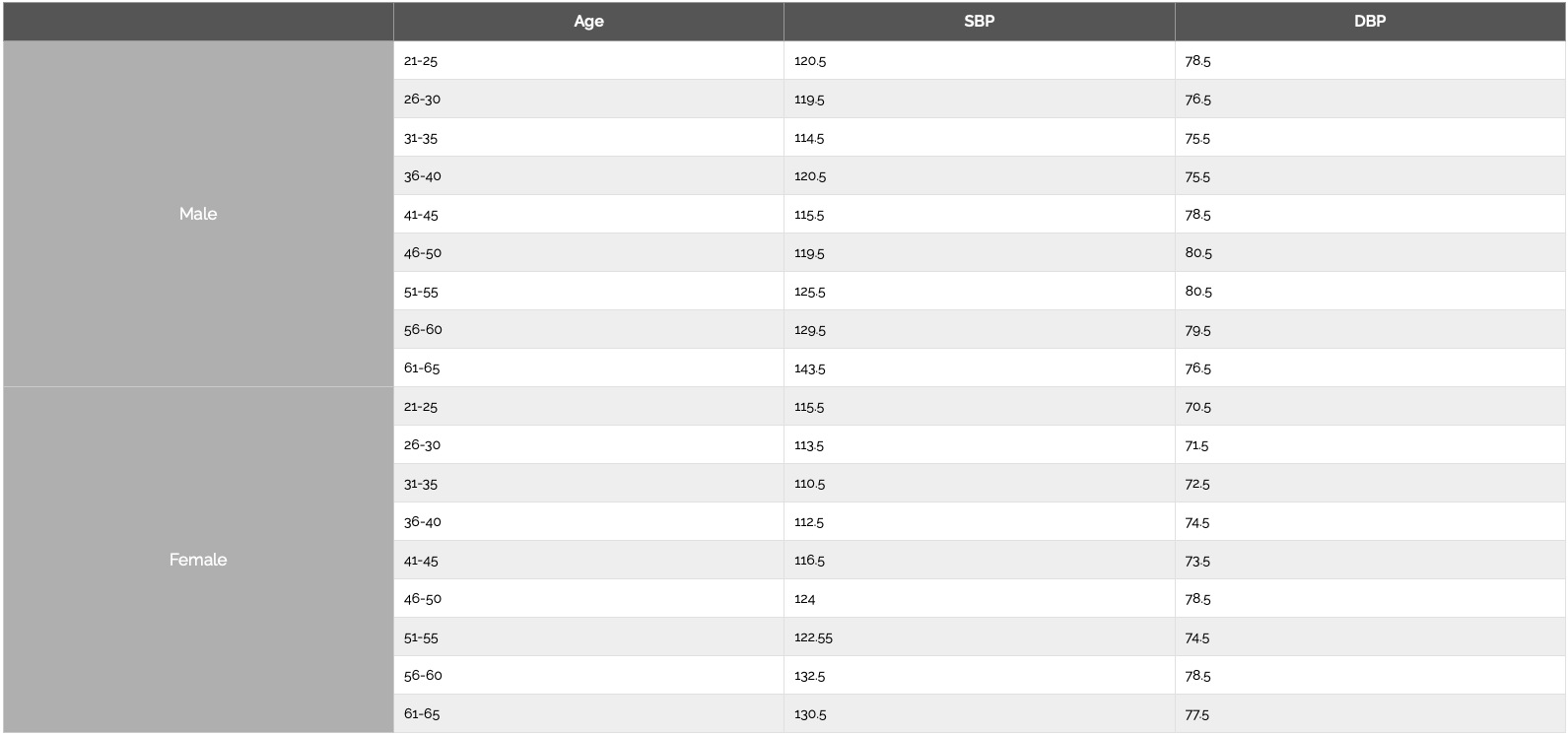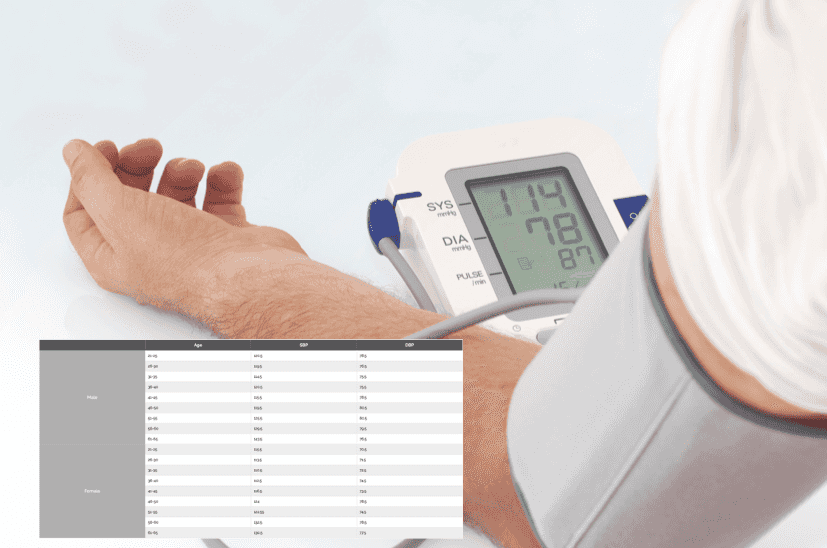Blood pressure is the measure of the force of blood pushing against the walls of your arteries as your heart pumps blood. The top number, or systolic pressure, is the highest point when your heart contracts and pushes blood out. The bottom number, or diastolic pressure, is the lowest point when your heart relaxes between beats. When both numbers are high, it means that your heart is having to work harder to pump blood through your arteries.
The table below shows the average blood pressure for children and adults of different ages. As you can see, blood pressure gradually decreases as we get older.
For adults, a normal blood pressure is below 120/80 mmHg. But as we get older, our blood pressure slowly decreases. The table below shows the average blood pressure for adults of different ages.
Blood pressure in adults
Age Systolic Pressure (mmHg) Diastolic Pressure (mmHg)
20-29 years old 120-129 80-84
30-39 years old 121-130 81-85
40-49 years old 119-128 80-84
50-59 years old 116-123 78-82
60+ years old 111-117 75-79

